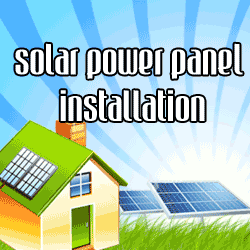

Being green can be quite inconvenient. Saving water means low flow toilets, low flow water fixtures, and less greenery in the yard. These are all good proven methods of practicing water conservation, but sometimes human behavior can get in the way.
- Human behavior is a large part of the equation
Some of the research that was done for the California Energy Commission back in the 80s showed that many of the conservation methods were not effective due to how the occupants of a home behaved. The smart thermostats, loads of insulation, double pane windows, outlet gaskets, and air tight construction didn’t do a lot of good when the homeowner turned up the air conditioning and opened the windows.
- Wasting time, water, and energy
Another human thing to do is to run water down the drain while waiting for hot water. I’m not suggesting anyone jump into a cold shower. By all means, wait until the water is hot before you jump. But there are quite a few people who are simply not patient enough to stand there waiting for the hot water. These people turn on the hot water full-blast, and then go do something else while they wait. They shave, or brush their teeth, or start the coffee, and then return to the shower.
The problem with this behavior is that not only does it waste a whole lot of water unnecessarily, it also wastes energy. There is no telling how much HOT water was run down the rain. With a two gallon per minute shower head, running it for two minutes after the arrival of hot water would waste 4 gallons of hot water.
- Heating the water is much more expensive than the water being heated
The energy to heat water is much more expensive than the water itself. For example, let’s assume natural gas costs $1.37/Therm, an 80% efficient gas water heater, temperature rise of 90 degrees, and a cost of water of $.0002/gallon (national average). In this case, that 4 gallons of hot water cost 48 cents to heat, and the water cost less than a penny.
- Water conservation products – hot water demand systems
There are several water conservation products on the market that can eliminate both the wasted water and the wasted energy in these cases. The products are known as hot water demand systems. These devices not only eliminate running water down the drain, but get you your hot water faster than running the faucet.
The way these products work is to pump the water from the water heater to the fixtures at high speed, sending the cooled off hot water that was in the hot water pipes back to the water heater through the cold water line. When you want hot water you press a button, which starts the pump, and when hot water reaches the fixture, the pump shuts off. The pump is typically located at the furthest fixture from the heater, and can often supply fast waste-free hot water at more than one fixture.
- ACT Metlund and Chilipepper Sales Manufacture Hot Water Demand Systems
Chilipepper Sales model CP6000
Chilipepper Sales and ACT Metlund both manufacture hot water demand systems. The Chilipepper model CP6000 hot water demand system has a powerful 1/3 horsepower motor, hooks up to the plumbing with hoses by just turning off the shut-off valves under the sink, and retails for about $180. It’s powerful enough to handle pipe runs of up to about 400 feet, and will operate any tank type or tankless water heater. It comes with a 5 year warranty and a 30 day money back guarantee.
- Metlund D’mand Systems
The ACT Metlund D'mand S-50T-PF Kit re-circulating pump has a small 1/40 horsepower motor, has ½ inch sweat fittings, and needs to be plumbed in on the meter side of the shut-off valves, requiring shutting off the water to the house. It retails for about $340.00 and has a three year warranty. It cannot be used with a tankless water heater, and is recommended for pipe runs of less than 50 feet.
The ACT Metlund S-70T-PF Kit has a small 1/25 horsepower motor, installs with ½” threaded pipe fittings, needs the water to the house turned off for installation, and retails for about $440. It has a 5 year warranty, and is recommended for less than 100 foot pipe runs or less than 60 feet with a tankless water heater.
The ACT Metlund S-02T-PF Kit has a 1/8 horsepower motor, installs with ½” fittings, meter side of the shut-offs, and retails for about $750.00. This model is recommended for pipe runs under 300 feet and works with tankless water heaters. It has a 5 year warranty.
- In conclusion
Home owners can be green by adding the convenience of fast hot water while substantially reducing the wastage of water and even water heating energy. Just saving that one 4-gallon wastage a day, with an electric water heater, would more than pay for the less expensive demand systems in less than a year, and the CP6000 in months.
Some water companies offer rebates for hot water demand systems. A water company in Arizona is offering a $200 rebate for installing one of these systems. The rebate makes for a very short payback period indeed.
All of these systems have life expectancies of about 15 years…the same as the average water heater. Be green, install a hot water demand system in your home and start saving time water, energy, and money!
Two hot water demand systems compared Metlund vs Chilipepper: Metlund d mand System Info.
For more information about all kinds of water heaters: Hot Water Heaters Instant hot water systems.
Article Source: Sustainable Living Articles





